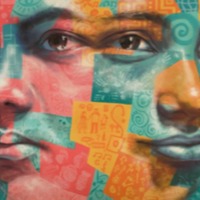
Courtney
There are an estimated 403,000 people living in modern slavery in the United States (GSI 2018). Sex trafficking exists throughout the country. Traffickers use violence, threats, lies, debt bondage and other forms of coercion to compel adults and children to engage in commercial sex acts against their will. The situations that sex trafficking victims face vary, many victims become romantically involved with someone who then forces them into prostitution. Others are lured with false promises of a job, and some are forced to sell sex by members of their own families. Victims of sex trafficking include both foreign nationals and US citizens, with women making up the majority of those trafficked for the purposes of commercial sexual exploitation. In 2015, the most reported venues/industries for sex trafficking included commercial-front brothels, hotel/motel-based trafficking, online advertisements with unknown locations, residential brothels, and street-based sex trafficking. Courtney* was a member NXIVM, a well-known American cult that engaged in sex trafficking, forced labour, and racketeering run by founder Keith Raniere. She tells about her experience of the ESP programme, being branded and forced to have sex with Raniere.
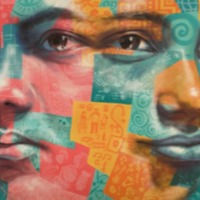
Hannah
There are an estimated 403,000 people living in conditions of modern slavery in the United States (GSI 2018). The US attracts migrants and refugees who are particularly at risk of vulnerability to human trafficking. Trafficking victims often responding to fraudulent offers of employment in the US migrate willingly and are subsequently subjected to conditions of involuntary servitude in industries such as forced labour and commercial sexual exploitation. Hannah experienced the world of sexual exploitation and forced labour when her foster parents adopted her at the age of 12, in Texas, USA.
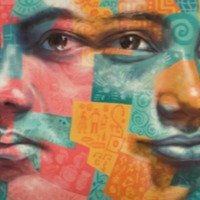
Bianca
There are an estimated 403,000 people living in modern slavery in the United States (GSI 2018). Sex trafficking exists throughout the country. Traffickers use violence, threats, lies, debt bondage and other forms of coercion to compel adults and children to engage in commercial sex acts against their will. The situations that sex trafficking victims face vary, many victims become romantically involved with someone who then forces them into prostitution. Others are lured with false promises of a job, and some are forced to sell sex by members of their own families. Victims of sex trafficking include both foreign nationals and US citizens, with women making up the majority of those trafficked for the purposes of commercial sexual exploitation. In 2015, the most reported venues/industries for sex trafficking included commercial-front brothels, hotel/motel-based trafficking, online advertisements with unknown locations, residential brothels, and street-based sex trafficking. Bianca began speaking to a man she had met online and when she turned sixteen, she left home and travelled to see him. She went to Vegas where the man trafficked her into prostitution. He threatened to kill anyone that tried to take her home and forced Bianca to start taking drugs. She was finally able to leave and later heard that he had been arrested.
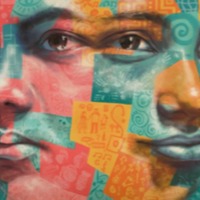
Caroline
There is an estimated 48,000 people living in modern slavery in Libya (GSI 2018). Libya is a major transit destination for migrants and refugees hoping to reach Europe by sea. Human trafficking networks have prospered amid lawlessness, created by the warring militias that have been fighting for control of territories since the toppling of Muammar Gaddafi in 2011. Highly organized trafficking and migrants smuggling networks that reach into Libya from Niger, Nigeria, Chad, Eritrea, Ethiopia, Somalia, Sudan, and other sub-Saharan states subject migrants to forced labor and forced prostitution through fraudulent recruitment, confiscation of identity and travel documents, withholding or non-payment of wages, debt bondage, and verbal, physical, and sexual abuse. In some cases, migrants reportedly pay smuggling fees to reach Tripoli, but once they cross the Libyan border they are sometimes abandoned in southern cities or the desert where they are susceptible to severe forms of abuse and human trafficking. Caroline thought she was travelling to Europe with her boyfriend, but he sold her to a woman who took her to Libya and sold her on again to another man. She was taken to Tripoli and forced into prostitution. After Caroline escaped prostitution, she went to live in a residential house. But this house was raided and she was put in a prison where she was subjected to physical and sexual abuse daily. She was finally able to escape the prison by jumping a fence and found herself at a place where people were getting on a boat to Italy. She joined them, but the journey was not easy.
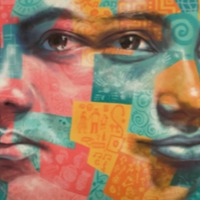
Dian W.
There are an estimated 61,000 people living in modern slavery in Saudi Arabia (GSI 2018). It is a source and destination country for men and women trafficked from South and South East Asia and Africa. People voluntarily migrate to the country to work in a variety of sectors including construction and domestic service; many of these workers are vulnerable to forced labour. Traffickers and brokers often illegally recruit migrants to work in Saudi Arabia and subsequently forced them into domestic servitude or debt bondage. Female domestic workers are particularly at risk of trafficking due to their isolation inside private residences. Non-payment or late payment of wages remains a complaint from foreign workers, while employer's withholding of worker's passports remains a significant problem. Trafficking perpetrators include businesses of all sizes, private families, recruitment companies in both Saudi Arabia and labor-sending countries, and organized criminal elements. Dian W. travelled to Saudi Arabia as a domestic worker, but what she found was physical and sexual abuse. She was raped by her employer and his son, having a baby as a result of the assaults. Dian ran away to the embassy shelter with her child in the hopes of returning home.
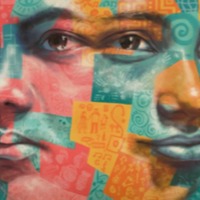
Aizere
There are an estimated 794,000 people living in conditions of modern slavery in Russia (GSI 2018). Women and children are subjected to commercial sexual exploitation and sex trafficking in prostitution and pornography. Women are lured by the promise of lucrative employment and a new location, travelling to the country under the pretence of legitimate employment and a better life. However, when they arrive, they are forced into prostitution in brothels, hotels and saunas. There is also evidence of traffickers advertising sexual services of children online. However, despite the evidence of sex trafficking in Russia, it remains an under-recognised area of enslavement in the country. Aizere*, A 16-year old girl from Kazakhstan was sold by her parents to a man who promised her work at a market. Her documents were forged and upon arrival in Russia she was forced into prostitution.
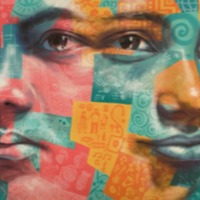
Rayana
There are an estimated 794,000 people living in conditions of modern slavery in Russia (GSI 2018). Forced labour remains the predominant form of human trafficking in the country. Labour trafficking has been reported in the construction, manufacturing, logging, textile, and maritime industries, as well as in sawmills, agriculture, sheep farms, grocery and retail shops, restaurants, waste sorting, street sweeping, domestic service, and forced begging. Many migrant workers experience exploitative labour conditions characteristic of trafficking cases, such as withholding of identity documents, non-payment for services rendered, physical abuse, lack of safety measures, or extremely poor living conditions. Rayana*, an 18-year old woman from Kazakhstan, was trafficked to Russia after a man offered her work near Moscow. But when she arrived, she was forced to work in a shop with two other girls. Rayanna was subjected to physical and sexual violence. She finally escaped one night by clinging to the back of a lorry.

Medina
There are an estimated 794,000 people living in conditions of modern slavery in Russia (GSI 2018). Forced labour remains the predominant form of human trafficking in the country. Many migrant workers experience exploitative labour conditions characteristic of trafficking cases, such as withholding of identity documents, non-payment for services rendered, physical abuse, lack of safety measures, or extremely poor living conditions. Women and children are also subjected to commercial sexual exploitation and sex trafficking in prostitution and pornography. Medina*, a 15-year-old girl from Kazakhstan was trafficked after being sold by her parents. The man who bought her forged her birth certificate and took her to Russia where she was forced to do domestic work and was subjected to sexual exploitation.
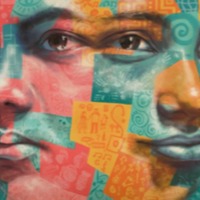
Aisuluu
There are an estimated 24,000 people living in modern slavery in Kyrgyzstan (GSI 2018). The country remains a source, transit and destination country for men, women and children subjected to forced labour and sex trafficking. Women in the country are often subject to kidnapping and forced marriage, known as Ala kachuu. The act was outlawed in the country in 2013 when authorities recognised it could lead to marital rape, domestic violence and psychological trauma. However, in some communities the practice remains common. Aisuluu experienced Ala kachuu (bride kidnapping) when she was seventeen years old. She was held in a house by her kidnappers for two months before she was forcibly married and experience violence for a further two years. Aisuluu tells of the difficulties of surviving bride kidnapping and being treated as a second-class citizen.
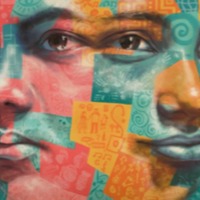
Rebekah Begay
There are an estimated 403,000 people living in modern slavery in the United States (GSI 2018). Sex trafficking exists throughout the country. Traffickers use violence, threats, lies, debt bondage and other forms of coercion to compel adults and children to engage in commercial sex acts against their will. The situations that sex trafficking victims face vary, many victims become romantically involved with someone who then forces them into prostitution. Others are lured with false promises of a job, and some are forced to sell sex by members of their own families. Victims of sex trafficking include both foreign nationals and US citizens, with women making up the majority of those trafficked for the purposes of commercial sexual exploitation. In 2015, the most reported venues/industries for sex trafficking included commercial-front brothels, hotel/motel-based trafficking, online advertisements with unknown locations, residential brothels, and street-based sex trafficking. Rebekah Begay was sexual abused at a young age by her family and by her first boyfriend. Begay developed a drug addiction and ran away, flying to Atlanta to live with her sister. When she was 16 years old, Begay met a man on a dating website, but after a few months he took her to a house and sold her into prostitution. She was able to run away when one of the men she had been sold to was distracted but the experience had lasting effects.
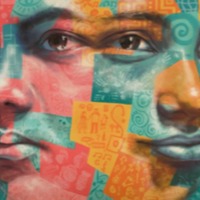
Amanthi K.
There are an estimated 61,000 people living in modern slavery in Saudi Arabia (GSI 2018). It is a source and destination country for men and women trafficked from South and South East Asia and Africa. People voluntarily migrate to the country to work in a variety of sectors including construction and domestic service; many of these workers are vulnerable to forced labour. Traffickers and brokers often illegally recruit migrants to work in Saudi Arabia and subsequently forced them into domestic servitude or debt bondage. Female domestic workers are particularly at risk of trafficking due to their isolation inside private residences. Non-payment or late payment of wages remains a complaint from foreign workers, while employer's withholding of worker's passports remains a significant problem. Trafficking perpetrators include businesses of all sizes, private families, recruitment companies in both Saudi Arabia and labor-sending countries, and organized criminal elements.Amanthi K. travelled to Saudi Arabia for work where she was trapped in domestic servitude. She became pregnant after her employer raped her and was sentenced to nine months in prison for adultery in 2006. Amanthi K. reported that there was an interpreter between Arabic and Sinhala, but that she had no lawyer. The Saudi authorities did not provide her with an opportunity to notify the Sri Lankan mission about her case and she had no contact or assistance from them during her ordeal.
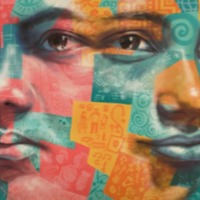
Chamali W.
There are an estimated 61,000 people living in modern slavery in Saudi Arabia (GSI 2018). It is a source and destination country for men and women trafficked from South and South East Asia and Africa. People voluntarily migrate to the country to work in a variety of sectors including construction and domestic service; many of these workers are vulnerable to forced labour. Traffickers and brokers often illegally recruit migrants to work in Saudi Arabia and subsequently forced them into domestic servitude or debt bondage. Female domestic workers are particularly at risk of trafficking due to their isolation inside private residences. Non-payment or late payment of wages remains a complaint from foreign workers, while employer's withholding of worker's passports remains a significant problem. Trafficking perpetrators include businesses of all sizes, private families, recruitment companies in both Saudi Arabia and labor-sending countries, and organized criminal elements. Sri Lankan domestic worker Chamali W. was trafficked to Saudi Arabia. She describes the sexual harassment she experienced form her employer’s two sons.
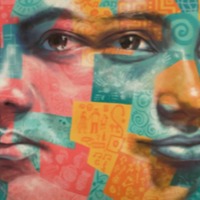
Nur A.
There are an estimated 61,000 people living in modern slavery in Saudi Arabia (GSI 2018). It is a source and destination country for men and women trafficked from South and South East Asia and Africa. People voluntarily migrate to the country to work in a variety of sectors including construction and domestic service; many of these workers are vulnerable to forced labour. Traffickers and brokers often illegally recruit migrants to work in Saudi Arabia and subsequently forced them into domestic servitude or debt bondage. Female domestic workers are particularly at risk of trafficking due to their isolation inside private residences. Non-payment or late payment of wages remains a complaint from foreign workers, while employer's withholding of worker's passports remains a significant problem. Trafficking perpetrators include businesses of all sizes, private families, recruitment companies in both Saudi Arabia and labor-sending countries, and organized criminal elements. Indonesian domestic worker Nur A., travelled to Saudi Arabia for work but found herself trapped in domestic servitude. Nur was not paid for her labour unless she begged and she was sexually abused by her employer’s son.
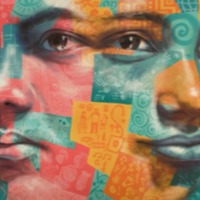
Sri H.
There are an estimated 61,000 people living in modern slavery in Saudi Arabia (GSI 2018). It is a source and destination country for men and women trafficked from South and South East Asia and Africa. People voluntarily migrate to the country to work in a variety of sectors including construction and domestic service; many of these workers are vulnerable to forced labour. Traffickers and brokers often illegally recruit migrants to work in Saudi Arabia and subsequently forced them into domestic servitude or debt bondage. Female domestic workers are particularly at risk of trafficking due to their isolation inside private residences. Non-payment or late payment of wages remains a complaint from foreign workers, while employer's withholding of worker's passports remains a significant problem. Trafficking perpetrators include businesses of all sizes, private families, recruitment companies in both Saudi Arabia and labor-sending countries and organized criminal elements. Sri H., travelled from Indonesia to Saudi Arabia for work. Her employer took her passport and locked her in the house. She was forced to work long hours for no money and subjected to sexual harassment. Sri H. called the Indonesian embassy for help.
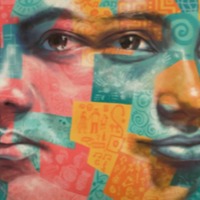
Haima G.
There are an estimated 61,000 people living in modern slavery in Saudi Arabia (GSI 2018). It is a source and destination country for men and women trafficked from South and South East Asia and Africa. People voluntarily migrate to the country to work in a variety of sectors including construction and domestic service; many of these workers are vulnerable to forced labour. Traffickers and brokers often illegally recruit migrants to work in Saudi Arabia and subsequently forced them into domestic servitude or debt bondage. Female domestic workers are particularly at risk of trafficking due to their isolation inside private residences. Non-payment or late payment of wages remains a complaint from foreign workers, while employer's withholding of worker's passports remains a significant problem. Trafficking perpetrators include businesses of all sizes, private families, recruitment companies in both Saudi Arabia and labor-sending countries and organized criminal elements. Haima G. travelled to Saudi Arabia for work to help her family. Relatives deceived Haima G. about her promised job abroad. Her agent sexually harassed her, and her employer threatened to return her to her abusive agent if she complained. Her employer sexually assaulted her, retained her passport, and locked her in the workplace so that she could not escape.
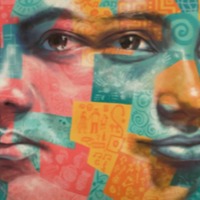
Thanh
The Global Slavery Index 2018 estimates that on any given day in 2016, an estimated 3.6 million men, women and chidlren were living in modern slavery in Europe and Central Asia (GSI 2018). People are subjected to exploitation in forced labour, debt bondage and forced sexual exploitation. Government response in Europe is particularly strong with a number of regional bodies holding them account and monitoring responses, and while countries in Central Asia have taken steps to tack modern slavery, more needs to be done. First trafficked at the age of five with her parents out of Vietnam into China, she and her family were promised a better life. At the age of 15, Thanh had to sleep with so many men it left her with permanent damage to her spine. She was trafficked to Russia to pick fruit, across a continent to France for sex work in a forest encampment: separated from her 11-year-old son and thrown into a refrigerated lorry to be smuggled to England. In London, she was taken to a basement for sex work and labour packing vegetables. One day she seized an opportunity to flee barefoot. Undocumented, Thanh was afraid to go to the police and only received help after a lump in her breast made her go to a doctor. Eventually she was recognised as a victim of modern slavery and with the help of the British Red Cross was reunited with her son.
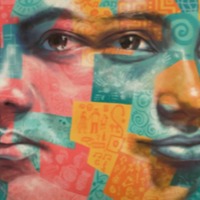
Grizelda
There are an estimated 155,000 people living in modern slavery in South Africa (GSI 2018). South Africa remains a source, transit and destination country for men, women and children subjected to forced labour and sex trafficking. South African children were recruited from poor, rural areas to urban centres, such as Johannesburg, Cape Town, Durban, and Bloemfontein, where girls were subjected to sex trafficking and domestic servitude and boys are forced to work in street vending, food service, begging, criminal activities, and agriculture. Local criminal rings organized child sex trafficking, Russian and Bulgarian crime syndicates facilitated trafficking within the Cape Town commercial sex industry, and Thai and Chinese nationals often organized the sex trafficking of Asian men and women. Nigerian syndicates dominated the commercial sex industry in several provinces. To a lesser extent, syndicates recruited South African women to Europe and Asia, where some are forced into prostitution, domestic servitude, or drug smuggling. Grizelda Grootboom was 18 years old when a trip to Johannesburg with a friend ended in her being trafficked in Yeoville. She was tied up in a room for two weeks and forced to work as a prostitute. Grizelda now works for Embrace Dignity, advocating to prevent violence against women, commercial and sexual exploitation and human trafficking.
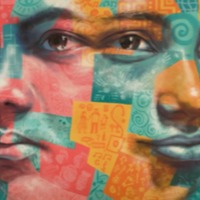
Muneera
It is estimated that almost 8 million people are living in conditions of modern slavery in India (GSI 2018). The skewed sex ratio in some regions of India has fuelled the trafficking and selling of women and young girls as brides within India. Women are reportedly sold off into marriage by their families, sometimes at a young age, and end up enduring severe abuse, rape and exploitation by their husbands. It is also reported that women and girls from impoverished backgrounds have been lured by promises of marriage by younger men from urban areas, then forced into sex work once married. Muneera Beguma was just 12 years old when she was sold into marriage with a man aged 70. She was locked up and subjected to physical and sexual abuse. Eventually he divorced her over the phone. Muneera filed a police case and authorities arrested the middleman involved in selling her.
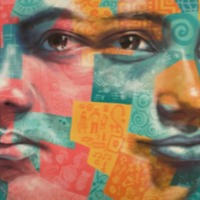
Grace
There are an estimated 136,000 people living on conditions of modern slavery in the United Kingdom (Global Slavery Index 2018). According to the 2017 annual figures provided by the National Crime Agency, 5, 145 potential victims of modern slavery were referred through the National Referral Mechanism in 2017, of whom 2,454 were female, 2688 were male and 3 were transgender, with 41% of all referrals being children at the time of exploitation. People are subjected to slavery in the UK in the form of domestic servitude, labour exploitation, organ harvesting and sexual exploitation, with the largest number of potential victims originating from Albania, China, Vietnam and Nigeria. This data however does not consider the unknown numbers of victims that are not reported. Grace was trafficked from Nigeria to the UK into forced prostitution by a local woman who used the traditional African belief of Juju to threaten her. Eventually she escaped and told the police what happened but her trafficker and the woman that sold her fled the UK.
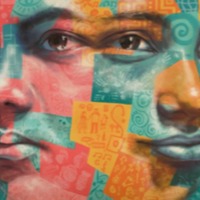
Melody
There are an estimated 136,000 people living on conditions of modern slavery in the United Kingdom (Global Slavery Index 2018). According to the 2017 annual figures provided by the National Crime Agency, 5, 145 potential victims of modern slavery were referred through the National Referral Mechanism in 2017, of whom 2,454 were female, 2688 were male and 3 were transgender, with 41% of all referrals being children at the time of exploitation. People are subjected to slavery in the UK in the form of domestic servitude, labour exploitation, organ harvesting and sexual exploitation, with the largest number of potential victims originating from Albania, China, Vietnam and Nigeria. This data however does not consider the unknown numbers of victims that are not reported. Melody was brought from Nigeria to the UK by a family friend at 12 years old. Upon arrival she was taken to a woman’s house where she was forced to clean every day for long hours under constant verbal abuse. This woman started bringing men to the house to sexually abuse Melody. Melody was kicked out of the house one day when she refused to sleep with one of the men the woman had brought to her. She spent months homeless on the street where she was subjected to further sexual violence. She was finally able to leave her situation with the help of an advisor from Refugee Council.